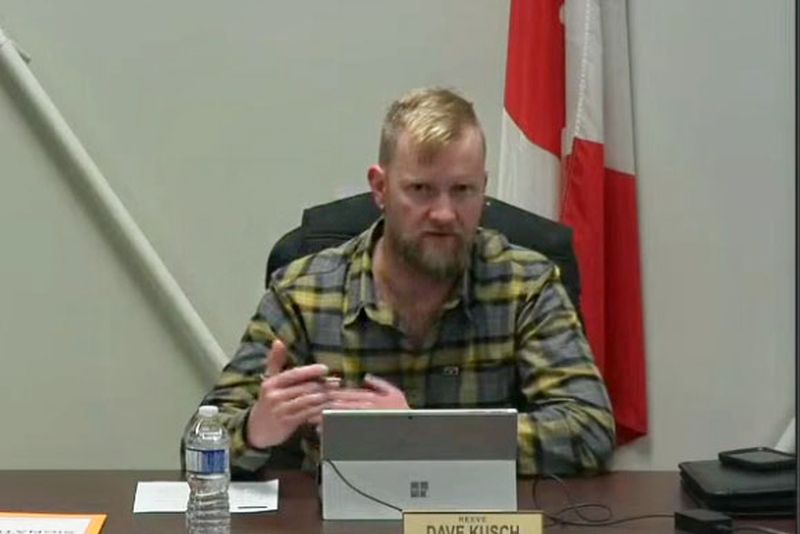When Woodlands County entered its financial recovery plan at the end of 2019, the move came
with a large review of programs, policies, and expenditures to find ways to reduce costs. One of
the many options that Woodlands County Council asked its administration to investigate was the
funds given to community groups for events and programs run in the municipality.
In early 2020, a change to Policy 7002 – Community Organization Capital & Operating Grants
was approved, which reduced the utility reimbursement to said groups by fifteen percent, from
90 percent to 75 percent. Changes also included a maximum amount for maintenance for halls
and outdoor spaces such as playgrounds, ice rinks and ball diamonds. Policy updates took
office administration costs, like accounting, office supplies, janitorial and website fees, off the
funding table but kept insurance subsidies at 75 percent, with the remaining 25 percent being
covered through the operating grant groups received.
Heather Anderson, Community Services Coordinator for Woodlands County, explained how and
why the policy changed and what changes were being proposed now that the policy had
received another look-over. “You asked that we look at ways to reduce funding but continue to
still support our groups,” she began, speaking to the changes that came in 2020.
“What this policy guides is how much we subsidize and how much we provide for capital, but
tonight we are talking about the operating side of this grant,” she added, speaking at the
Governance & Priorities Committee meeting on the evening of February 21. The committee
features all the council and gives the elected officials a chance to talk openly about policy
changes and other topics before voting on them at a regular meeting.
Anderson explained that the changes in 2020, which lowered utility subsidies and placed caps
on amenity funding, gave them consistent numbers to budget. “We budgeted for that maximum
amount, and if they (a community group) were under, then we were under too, so we had that
surplus. Not only did we reduce what we were funding, we were still giving them a good amount
of money, but it was helpful to us (because it) reduced budgeting risk and was more consistent,”
she said.
If a group was capped at funding of $5,000 and only used $2,500 in one year, then the
remaining half provided the County with a small surplus. The decision was made that after two
years with the changes in place, the County would check in with groups to see how things were
going. In 2022, the pandemic was in full swing, which paused the check-in for two more years.
This year, Anderson said the Community Services Committee reviewed the policy and had one
recommended change to pass to the Governance & Priorities Committee for review. The
recommendation focused on the Agricultural Societies in Woodlands County, which includes
Fort Assiniboine, Anselmo and Whitecourt & District.
Under 5.1 of Policy 7002, it states that “Agricultural Societies will be funding at less their
Agricultural Societies Grant.” The Agricultural Societies Grant is provided by the Alberta
Association of Agriculture Societies (AAAS). Woodlands County’s policy means that if a group
received, say, $10,000 from the AAAS, any funding they qualified for from Woodlands County
would be lowered by that amount. Other groups did not see the same deduction, just the ag
societies, because of the funding they could access from AAAS.
However, after the changes in 2020 placed caps on funding, two ag societies (Anselmo and
Whitecourt & District) received nothing. “We came to council when that first happened, and
Council agreed to say that they could get a minimum of $5,000,” which was the minimum the
other groups received, explained Anderson.
Both ag societies received $5,000 each in 2022 and 2023 and fully paid insurance premiums. To
compare, in 2018, the Whitecourt & District Ag Society received just over $37,000 from
Woodlands County. In 2019, they received thirty-one thousand; in 2020, they received around
$28,000. Dropping to zero before Woodlands approved up to $5,000 in 2022 would have been a
big hit.
The Community Services Committee proposed removing the line from the policy so that ag
societies in Woodlands County would not see their funding lowered based on what they
received from the Alberta Association of Agriculture Societies. “All of our community groups do
amazing things, but our ag societies are active, and they are doing great things in their
communities, and they do a lot of programming. This would still keep it fair with the rest of the
community groups but maintain the level of funding that we give to them so they can operate,”
added Anderson.
From a financial standpoint, Woodlands County is not expecting to see much for budget
implications through 2024 because they budgeted each group’s funding allotments at the
maximum amount, which most groups don’t reach, leaving room in this year’s budget to soak up
most, if not all, of the overage. “Actuals have been under budget every year,” said Anderson.
In 2025, Woodlands County may need to adjust funding towards the groups to sidestep the off
chance that all groups use their total maximum funding in any given year, which could result in
going over budget. If Woodlands County Council votes to approve the policy changes at an
upcoming meeting, the Anselmo Ag Society could see an additional $15,000 in funding, and the
Whitecourt & District Ag Society could see $28,000.








More Stories
Community spirit shines at large-scale youth baseball event
Birthday party chaos sung beautifully by Pumpjack Players’ youth in spring musical
Gearing up for another season of cars, cruising and camaraderie